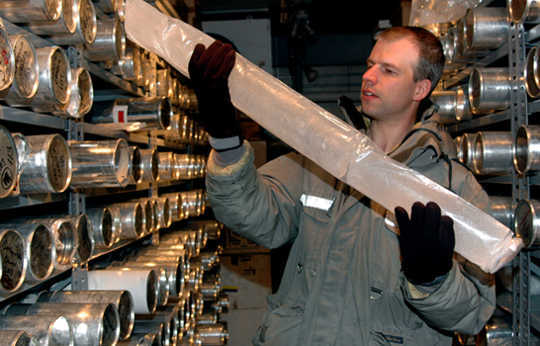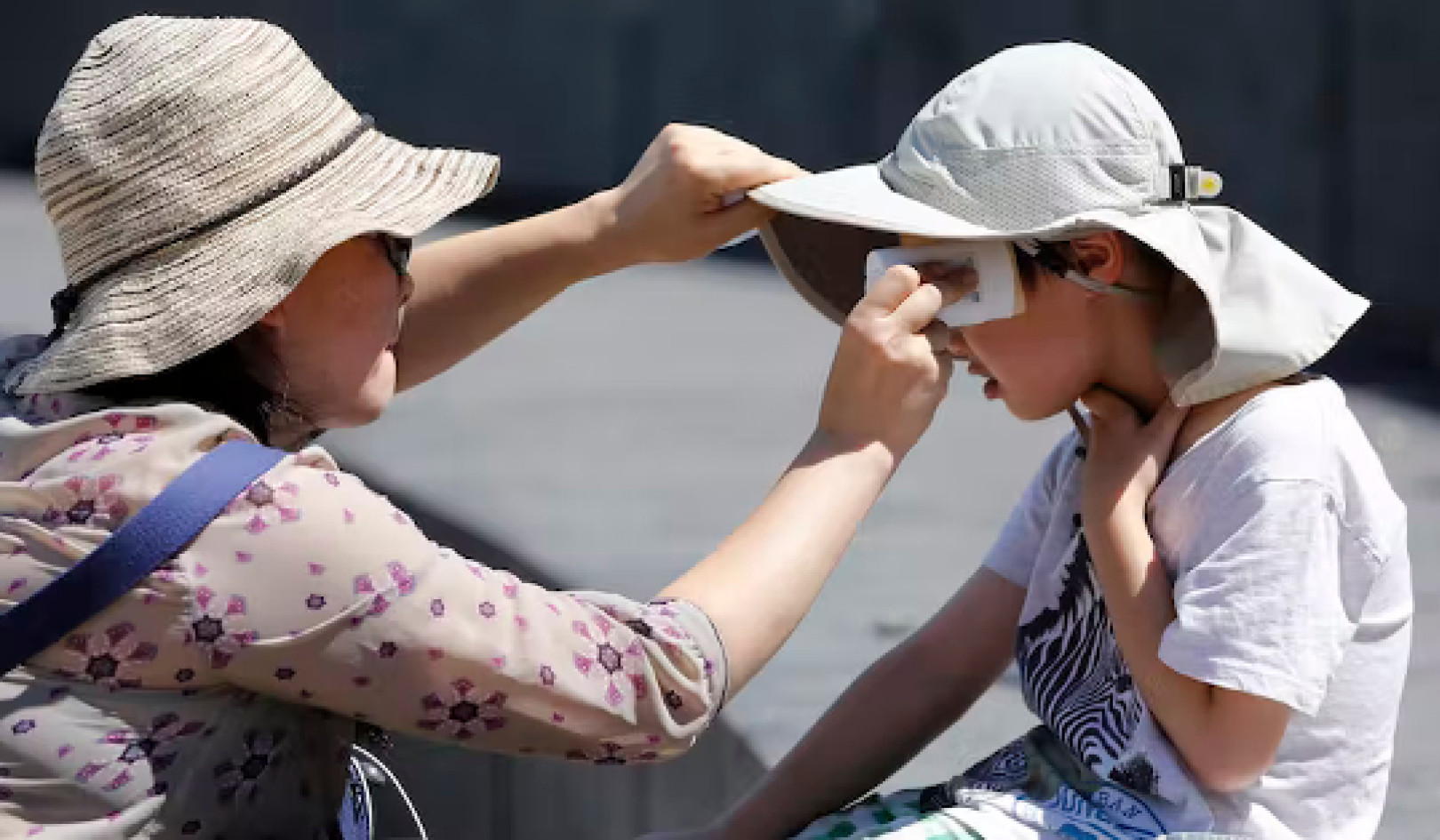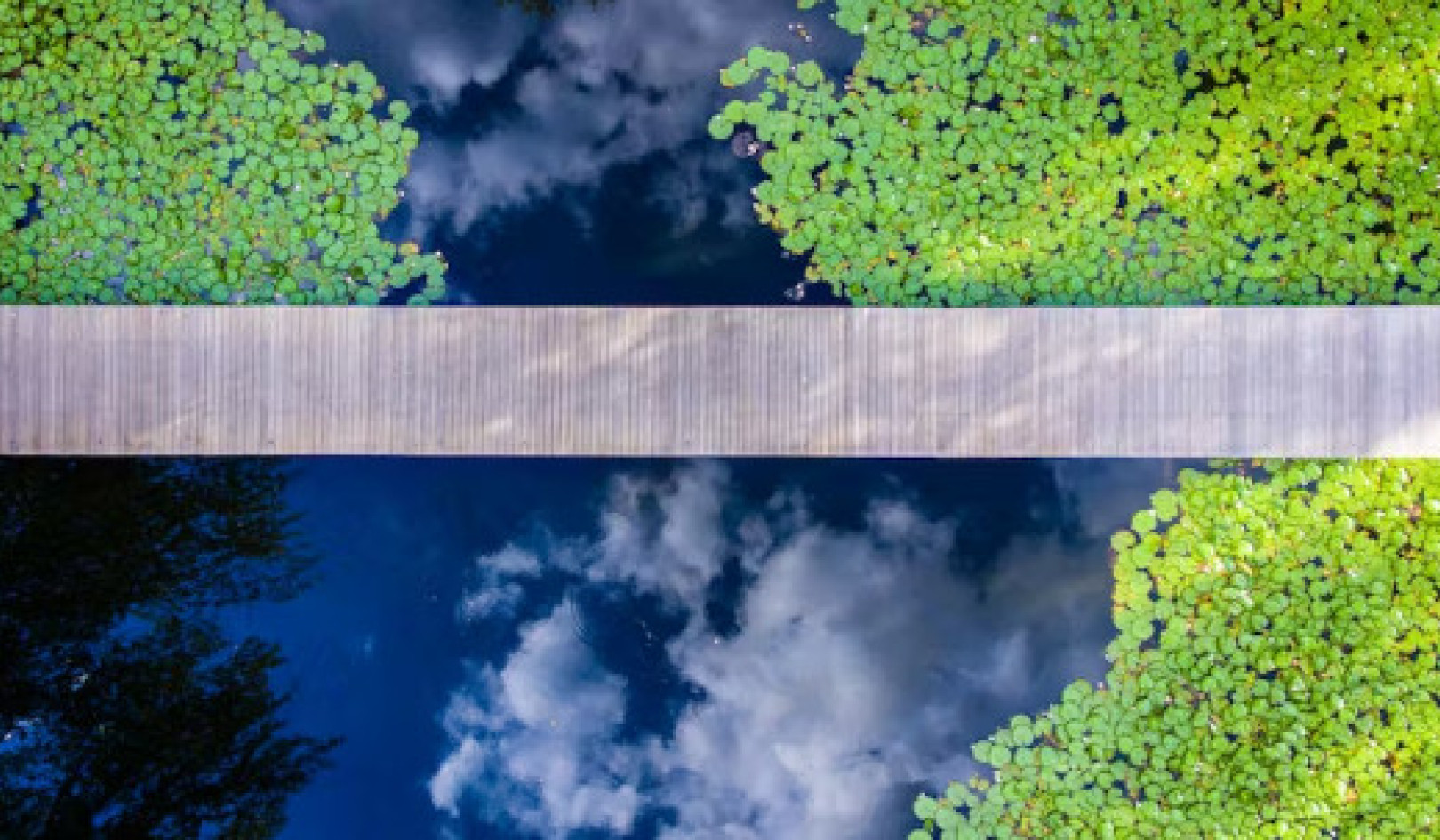Lonnie Thompson and Ellen Mosley-Thompson at The Ohio State University have been studying ice cores from around the world for over 30 years. They collect, store and study ice cores to understand the history of the Earth’s climate and preserve them for future scientists.
In this interview, they explain how ice cores preserve evidence of rare but impactful changes in Earth’s history often called “black swan” events, as well as smaller environmental changes and why it is necessary to preserve the ice cores and the glaciers they come from.
What can ice cores tell us about historical black swan events?
{vembed Y=ZHOdqb9ViLw}
How do ice cores help in understanding the past?
Ice cores are columns of ice drilled through glaciers that are highly versatile and detailed recorders of Earth’s climate and environment that cover hundreds to many thousands of years.
They store anything that is found in the atmosphere, such as atmospheric gases, pollen, microbes, emissions from volcanic eruptions, dust and salts carried by dust storms from deserts and salt flats, agricultural and grazing lands. They even can record ocean spray along with pollutants from human activities such as lead, mercury and radioactive nuclides from thermonuclear bomb tests.
Ice also preserves records of past temperature in the changing isotopic composition of water, and provides histories of snowfall by the thicknesses of ice that has formed each year.
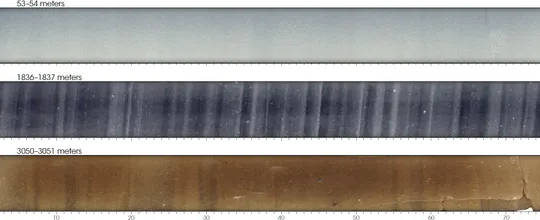
Relatively young and shallow snow becomes packed into coarse and granular crystals called firn (top: 53 meters deep). Older and deeper snow is compacted further (middle: 1,836 meters). At the bottom of a core (lower: 3,050 meters), rocks, sand and silt discolor the ice. (Photographs courtesy U.S. National Ice Core Laboratory) U.S. National Ice Core Laboratory
How can studying ice cores help learn about historical events?
Ice cores provide independent histories of past climate and environmental change that can often be compared to written and archaeological records of human history. This is especially true in the lower latitudes where earlier cultures rose and fell. For example, ice cores from the Quelccaya ice cap in the southern Peruvian Andes provide a nearly 2,000 year-by-year history of tropical climate that has helped anthropologists study how changes in temperature, and annual precipitation and drought patterns tracked the rise and fall of ancient Andean civilizations. For example, a major drought, recorded by precipitation (snowfall) and dust records in the Quelccaya cores, may have played a role in the demise of the Tiwanaku civilization around the year 1000.
Abrupt global events and “black swans,” or rare but impactful events, have been observed using ice core-derived paleoclimate information from high elevation tropical mountains. For example, evidence of the so-called “East India Drought” in the late 18th century was noticed in ice cores from both the Peruvian Andes and the Himalayas. This drought was partially responsible for million of deaths in India. This was a time when several successive El Niños occurred and were linked with the failure of the monsoon rains and decreasing precipitation in parts of tropical South America. Severe droughts were also documented in Egypt, Java, Australia, Mexico and the Caribbean. Great social upheavals, including four civil wars, occurred around the world.
Further back in time, several tropical ice core records contain evidence of a major worldwide drought about 4,200 years ago. This occurred during the rapid decline of the Akkadian Empire in Mesopotamia, the Harappan civilization in the Indus Valley, the so-called Old Kingdom in Egypt and the Longshan Culture in East China.
What kind of evidence would the current pandemic leave in the ice?
Some ice core records show that during the mid-1300s there was less lead in the atmosphere, possibly related to the sharp drop in mining and smelting activities. This coincided with the appearance of the plague known as the “Black Death” in Europe and Asia.
This decrease in human industrial activity is analogous to what is happening now during the current COVID-19 pandemic. Throughout the world people are traveling less, resulting in a reduction in emissions of carbon dioxide, nitrogen dioxide and sulfur dioxide into the atmosphere. Future glaciologists will likely see decreases in these gases and their chemical derivatives in ice cores.
As glaciers around the world recede due to climate change, how will it affect our ability to study the past?
Ice cores stored in freezer facilities become extremely important for future research as these unique archives of our past melt away on our warming Earth. The world’s ice is melting at an accelerating rate and this ice melt has already led to the major shrinking or loss of the smaller and very sensitive mountain glaciers in the Tropics such as some glaciers on Kilimanjaro and virtually all glaciers in Papua, Indonesia (New Guinea), where soon all the ice is likely to disappear.
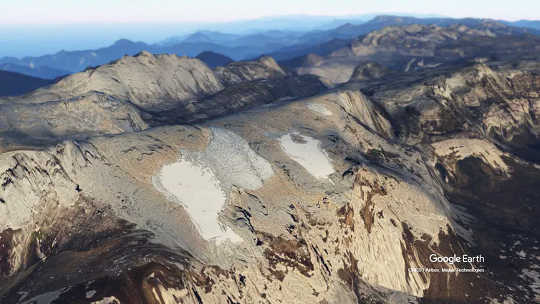 A 3D render of a glacier on the Puncak Jaya peak in Indonesia. Google Earth / Maxar Technologies, CC BY-NC
A 3D render of a glacier on the Puncak Jaya peak in Indonesia. Google Earth / Maxar Technologies, CC BY-NC
What are the possible impacts of receding glaciers in the areas that you study?
As mountain glaciers disappear and the streams and rivers that arise from them are affected, nearby communities, and to a lesser extent communities further downstream, face the greatest economic and societal consequences, including disruptions to agriculture, hydropower generation, urban water supply and tourism. In many places such as the Andes and Himalayas, glaciers have deep historical, cultural, and even spiritual meaning to the people who live in their shadows.
For example, since our first studies of the Quelccaya ice cap in southern Peru in 1974, we have been interacting with people in the local communities just to the west. Since the mid-1970s, Quelccaya has lost almost 40% of its area.link During the dry season, many of the grasslands that feed the herds of alpacas, llamas and sheep of the people in Phinaya, a local semi-nomadic pastoralist community, can be irrigated only with the water that runs off the ice cap and other glaciated peaks that are part of their territorial domain.
Quelccaya is also considered a very important apu, or sacred mountain, local deity, and ancestor. We encountered similar beliefs in Bolivia and in Papua, Indonesia (New Guinea).
The melting of mountain glaciers also presents hazards to local communities. Melting ice forms new lakes along the glacier margins, and the water is held back by natural dams which often fail. For example, we have mapped the retreat of Quelccaya’s Qori Kalis outlet glacier since 1978. A lake started forming in this valley in 1991 and grew to cover 84 acres and to be 200 ft deep. In March 2006, an avalanche from the ice cap fell into the lake, causing the lake to overtop the moraine dam and drown grazing alpaca along the outlet stream.
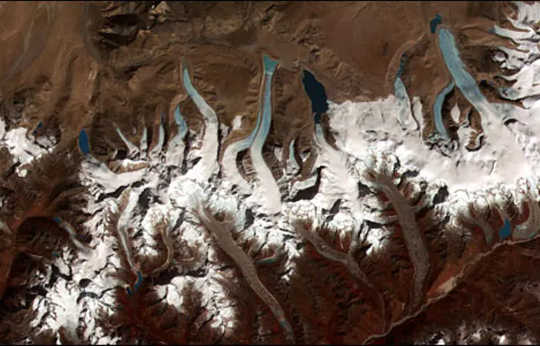
This ASTER image shows the lakes left behind by retreating glaciers in the Bhutan-Himalaya. Jeffrey Kargel / USGS/NASA
About the Authors
Lonnie Thompson, Distinguished University Professor, Earth Sciences, The Ohio State University and Ellen Mosley-Thompson, Distinguished University Professor, Geography (Atmospheric Sciences), Senior Research Scientist, The Ohio State University
This article is republished from The Conversation under a Creative Commons license. Read the original article.
Related Books
Life After Carbon: The Next Global Transformation of Cities
by Peter Plastrik , John Cleveland The future of our cities is not what it used to be. The modern-city model that took hold globally in the twentieth century has outlived its usefulness. It cannot solve the problems it helped to create—especially global warming. Fortunately, a new model for urban development is emerging in cities to aggressively tackle the realities of climate change. It transforms the way cities design and use physical space, generate economic wealth, consume and dispose of resources, exploit and sustain the natural ecosystems, and prepare for the future. Available On Amazon
The future of our cities is not what it used to be. The modern-city model that took hold globally in the twentieth century has outlived its usefulness. It cannot solve the problems it helped to create—especially global warming. Fortunately, a new model for urban development is emerging in cities to aggressively tackle the realities of climate change. It transforms the way cities design and use physical space, generate economic wealth, consume and dispose of resources, exploit and sustain the natural ecosystems, and prepare for the future. Available On Amazon
The Sixth Extinction: An Unnatural History
by Elizabeth Kolbert Over the last half-billion years, there have been Five mass extinctions, when the diversity of life on earth suddenly and dramatically contracted. Scientists around the world are currently monitoring the sixth extinction, predicted to be the most devastating extinction event since the asteroid impact that wiped out the dinosaurs. This time around, the cataclysm is us. In prose that is at once frank, entertaining, and deeply informed, New Yorker writer Elizabeth Kolbert tells us why and how human beings have altered life on the planet in a way no species has before. Interweaving research in half a dozen disciplines, descriptions of the fascinating species that have already been lost, and the history of extinction as a concept, Kolbert provides a moving and comprehensive account of the disappearances occurring before our very eyes. She shows that the sixth extinction is likely to be mankind's most lasting legacy, compelling us to rethink the fundamental question of what it means to be human. Available On Amazon
Over the last half-billion years, there have been Five mass extinctions, when the diversity of life on earth suddenly and dramatically contracted. Scientists around the world are currently monitoring the sixth extinction, predicted to be the most devastating extinction event since the asteroid impact that wiped out the dinosaurs. This time around, the cataclysm is us. In prose that is at once frank, entertaining, and deeply informed, New Yorker writer Elizabeth Kolbert tells us why and how human beings have altered life on the planet in a way no species has before. Interweaving research in half a dozen disciplines, descriptions of the fascinating species that have already been lost, and the history of extinction as a concept, Kolbert provides a moving and comprehensive account of the disappearances occurring before our very eyes. She shows that the sixth extinction is likely to be mankind's most lasting legacy, compelling us to rethink the fundamental question of what it means to be human. Available On Amazon
Climate Wars: The Fight for Survival as the World Overheats
by Gwynne Dyer Waves of climate refugees. Dozens of failed states. All-out war. From one of the world’s great geopolitical analysts comes a terrifying glimpse of the strategic realities of the near future, when climate change drives the world’s powers towards the cut-throat politics of survival. Prescient and unflinching, Climate Wars will be one of the most important books of the coming years. Read it and find out what we’re heading for. Available On Amazon
Waves of climate refugees. Dozens of failed states. All-out war. From one of the world’s great geopolitical analysts comes a terrifying glimpse of the strategic realities of the near future, when climate change drives the world’s powers towards the cut-throat politics of survival. Prescient and unflinching, Climate Wars will be one of the most important books of the coming years. Read it and find out what we’re heading for. Available On Amazon
From The Publisher:
Purchases on Amazon go to defray the cost of bringing you InnerSelf.comelf.com, MightyNatural.com, and ClimateImpactNews.com at no cost and without advertisers that track your browsing habits. Even if you click on a link but don't buy these selected products, anything else you buy in that same visit on Amazon pays us a small commission. There is no additional cost to you, so please contribute to the effort. You can also use this link to use to Amazon at any time so you can help support our efforts.


